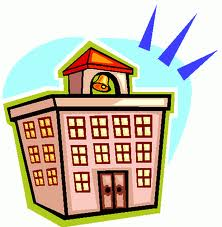Education: The Numbers Game
Jul 30

Human history becomes more and more a race between education and catastrophe.
H.G. Wells: The Outline of History: 1921
A common theme or premise will emerge when any major political, economic or social problem is being examined. It may be openly discussed or in many cases simply implied and woven into any discussion: Any problem will tend to greatly increase in complexity when total numbers become larger; correspondingly, the inverse will occur when total numbers become smaller and problems will tend to greatly decrease.
Education is no exception.
Today, we are all directly or indirectly involved in the process of education either with our own children attending classes, or as taxpayers funding the cost of education. Therefore, it is in everyone’s interest to see that education is a success. But yet our communities are often unable to agree on what education should accomplish, much less agree on a standard curriculum. Consequently, education has been less successful than what we would all like. High School graduation rates have declined from a peak of 77% in 1969 to around 69% in 2007.
The major factor influencing public school decline in this country is ongoing overpopulation. Growing populations mean growing problems, and therefore, more services required throughout our system of government. Costs to maintain needed services are escalating faster than the growing numbers of taxpayers. Program budgets are continually being reduced or downsized to reflect the lack of funding, even though there is more demand for services. Education is often a major casualty of financial consolidation.
The amount of students in each classroom, commonly known as class size, is directly effected by reduced budgets and attempts at downsizing. When there is less money and more students, the result is more students in fewer classrooms. Applying the premise that more students means an increase in complexity and more problems, it is clear that a class of 15 students will be more efficiently run and more learning will take place than a class of 35. It is logical that one teacher simply cannot control, manipulate, and educate 35 students as well as a class of 15 – all other things remaining equal.
The argument is often voiced that an exceptional teacher will be able to teach more students effectively than the average teacher, which may be true in some cases. But common sense should reflect reality: How many exceptional teachers are there in this country?Exceptional is a rare commodity, just like any other field whether it be lawyers, carpenters, dentists, machinists, doctors or etc.. The fact is that most of us are dedicated committed people who do the best job we can, and average results are the norm. Average is not a negative, it is a gauge to measure results on a spectrum, and most will be average. To expect anything else in any occupation is to be naive.
Money does not continue to flow to education in direct proportion when student populations are increasing. More demand for other government services such as police, and the need for new services such as welfare agencies, especially in large metropolitan areas, will considerably shrink education budgets. In fact, just when education needs proportionally more money to solve the problems associated with greater numbers, it is usually forced to absorb major cutbacks.
Interestingly though, when student populations shrink, money often remains at the same level or even increases. For one thing schools will be more effective as the total amount of students-at-risk (students who have behavior and learning problems) decreases relative to the drop in student population. Total students-at-risk will undoubtedly drop at a faster rate than the reduction in overall student population as other problems also decrease in society – crime, drugs, etc.. All of which tends to have even a greater cumulative impact on reducing the amount of dysfunctional families; consequently, less students-at-risk. As taxpayers we will be more willing to pay for education when we see more positive results.
It is the same principle that works in private schools. The more affluent among us pay more money for the education of their children because they know their is a direct correlation between private schools, class size and success. An effective public school system, with a clear set of goals and mission statements, not beleaguered with discipline and social problems is more likely to generate more revenues than one that is in shambles, as many are today. A confused and threatened public is not likely to pass bond issues when we are already heavily taxed for other services, and we believe little is to be gained by more money being spent. This is especially true for people who have no perceived direct connection to education such as single taxpayers, married couples without children and, senior citizens in the community.
 Inner city schools are particularly prime candidates for reducing total student populations and class size. Students in poor inner city schools attend school for many different reasons, least of all for some is education. Drug dealing, making friends, girl friends and boy friends, escape from a dysfunctional home, a decent meal, or simply a warm place to spend the day is oftentimes far more important to disadvantaged students than what they may or may not be learning. Many of the schools in the inner cities are warehouses for students who have few other places to go. Schools are too often a haven from the streets and homes, which are sometimes places of violence and abuse.
Inner city schools are particularly prime candidates for reducing total student populations and class size. Students in poor inner city schools attend school for many different reasons, least of all for some is education. Drug dealing, making friends, girl friends and boy friends, escape from a dysfunctional home, a decent meal, or simply a warm place to spend the day is oftentimes far more important to disadvantaged students than what they may or may not be learning. Many of the schools in the inner cities are warehouses for students who have few other places to go. Schools are too often a haven from the streets and homes, which are sometimes places of violence and abuse.
The likelihood of making any real changes in inner city schools without a radical change in student populations is remote at best. There is simply not enough money for needed classrooms, specially trained instructors, and teaching resources; consequently, there are few if any effective solutions on the horizon, and hope is just another four letter word, more often replaced by despair and failure.
All public education though will continue to show declining results without a reduction in student numbers, no matter what new buzz word comes along. There will always be some well meaning doctoral candidate who will develop some new system or theory that on paper looks promising. But recent experiences show that when new ideas hit the playground and reality sets in, most die quickly following a fast track to oblivion. And the reason they die, even the most thoughtful and creative, is that they face the impossible task of competing with overwhelming student populations, which will defeat the best of intentions before they can be implemented.
What is crucial for all of us, is to begin to understand the relationship between numbers of students and numbers of problems. Our system of public education is a mirror image of our society in general. If society is undergoing a trend of unemployment, poverty, violence and crime so will education. Students are the products of adults who create the conditions under which we all live. Crime, drugs, violence are all rising at a faster rate than the population, which is a troubling indicator for the future. Education is directly linked to these problems and faces the same quandary that society does: Populations are becoming more unwieldy, more impersonal, and more dangerous. Certainly, increasing the general population and student populations will only tend to dramatically increase the problems for both society and public education.
The major objective for both education and society is to decrease both overall student populations and populations in general, so taxpayers and others will again have confidence in the goals and results of public schools. Americans will support success and are less likely to support failure. Human nature being what it is, we are more likely to pour more money into success than continue to feed a system which is more and more confusing and threatening to the citizens who are responsible for funding it.
Today, we all have a tendency when dealing with increasing numbers to look at them in a fatalistic way. Increasing numbers are always with us, they never seem to go down and most likely they will entail growing expenditures. More houses, buildings, traffic, congestion, crime, government bureaucracies, the list is endless.
But students should be viewed differently. Unfortunately they represent a resource which is steadily increasing in numbers also, and by all reports, declining significantly in overall quality. But like it or not students are the future of this country. We should view their increasing numbers and seriously consider the correlation between more students, less money, declining quality, and more complex social problems.
That correlation should be a serious reminder to all of us that overpopulation should be taken as an ever increasing threat to this country.
Remember: One Billion people = 1000 Million people

Aug 03, 2011 @ 23:12:44
Hi David,
I’m really getting back up and running. I have been thinking lately about community. We live in such an individualistic society and economy that people tend to think about their own education only. Education is key but our leaders do not seem to value it much. In fact with so much talk about educated people being “elitist” I wonder about where we are headed. Great post. My next thing is to wrap up our work together. Coming soon!